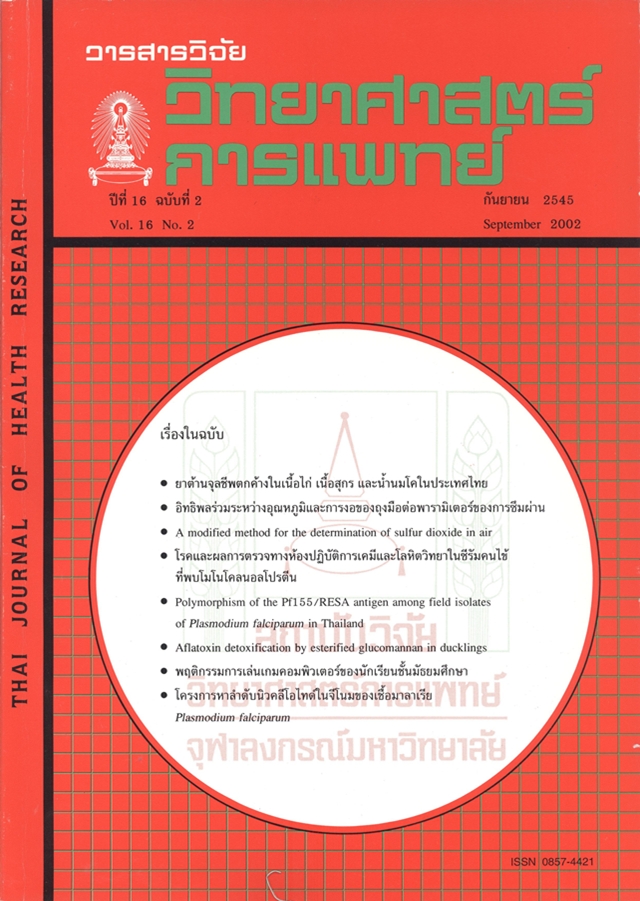Aflatoxin Detoxification by Esterified Glucomannan in Ducklings
Keywords:
aflatoxin, esterified glucomannan, duckling, blood chemistry, liver lesion, residueAbstract
This study was undertaken to detoxify aflatoxins using esterified glucomannan in the ducklings feed. One hundred and fifty 1-day-old, Cherry Valley ducklings were fed conventional feed for 5 days. The ducklings were then randomly divided into 5 groups, 30 birds in each. Five dietary treatments were given consisting of 1) conventional feed as a negative control, 2) 100 ppb aflatoxin B1 (AFB1), 3) 0.05% esterified glucomannan (EGM), 4) 100 ppb AFB1 plus 0.05% EGM, 5) 100 ppb AFB1 plus 0.1% EGM. The test diets were offered for 30 days followed by the negative control diet for 20 days. On the 30th, 35th, 40th, 45th and 50th day of experiment, six birds from each group were sacrificed. Blood samples were tested for alkaline phosphatase (ALP), gamma glutamyl transferase (GGT), aspartate amino transferase (AST) and alanine amino transferase (ALT). Liver samples were collected for histopathological findings. Muscle and liver tissues were analyzed for aflatoxin residues. On day 30, ALP was higher (P<0.05) in birds given dietary AFB1 than in those given the control diet, AFB1/EGM or EGM supplemented diets. The pattern of GGT activity was similar to the ALP activity from day 35. The liver of EGM supplemented birds given AFB1 showed markedly decreased bile duct proliferation, fatty degeneration and intermediate morphology of the hepatocyte and bile duct epithelial cells, in comparison to the AFB1 group. The residual levels of AFB1 and AFM1 were markedly higher in the liver than in the muscle. The levels in the liver and the muscle were highest in the AFB1 supplemented group and lower in the AFB1/EGM group. The study indicate that addition of EGM to diets containing 100 ppb AFB1 appears effective in reducing toxicity, however the 20 day withdrawal time was not sufficient for a complete resolution of the liver lesions and tissue residues. Even lower levels of AFB1 in duckling feeds should be required if all risk is to be avoided.







